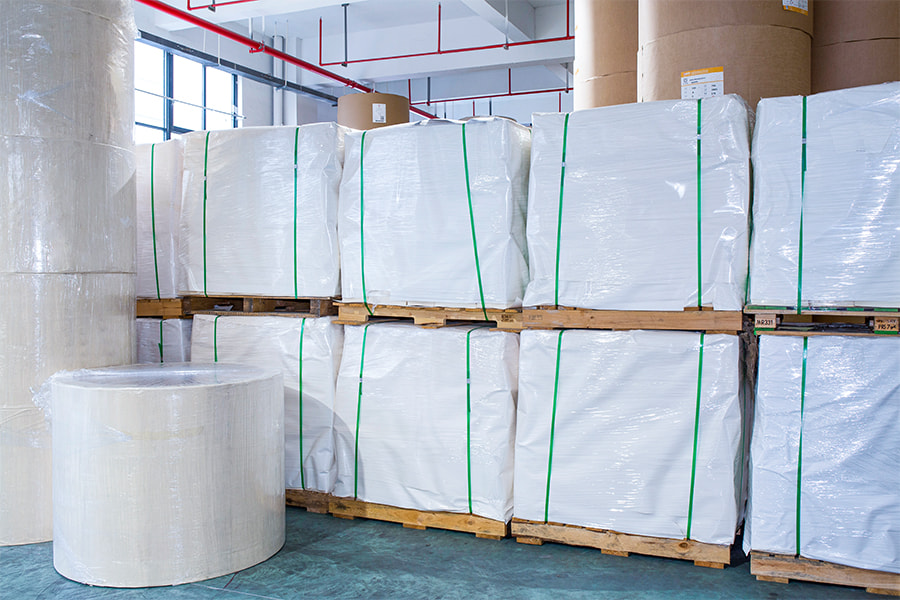The strength, durability and tear resistance of paper sheets are key factors that determine how paper performs in different application scenarios. These properties of paper can be significantly improved by optimizing the manufacturing process. Here are some common optimization methods:
Raw material selection and ratio
Fiber type: The strength and durability of paper are closely related to the type of fiber used. Natural plant fibers (such as wood pulp, cotton pulp, bamboo pulp, etc.) are common paper raw materials. Wood pulp fibers are longer and can provide higher tensile strength, while cotton pulp and bamboo pulp have better durability and flexibility. By optimizing the selection of raw materials and selecting fibers suitable for specific purposes, the strength and tear resistance of paper can be improved.
Fiber length: The fiber length of paper has an important influence on its strength and tear resistance. Long fibers usually enhance the tensile strength and tear resistance of paper more than short fibers. Therefore, in the pulping stage, the reasonable control of fiber length can improve the performance of paper by adjusting the shearing method of fibers.
Pulp handling and forming process
Pulping process control: In the production process, pulping is a key step in determining the strength of paper. The physical properties of paper can be changed by controlling the fiber dispersion of the pulp and the degree of fiber wear. Light beating can keep the fiber in a longer shape, thereby improving the strength of the paper; while excessive beating may shorten the fiber and reduce the tear resistance of the paper.
Fiber density and arrangement: During the papermaking process, the arrangement density of the fibers has a direct impact on the strength and tear resistance of the paper. Increasing the density of the fibers and optimizing their arrangement can make the paper tougher and reduce the risk of tearing.
Coating process
Selection of coating materials: The coating layer on the surface of the paper can improve its tear resistance, durability and printing performance. Coating materials are usually composed of polymer resins, fillers and other chemical additives, which can enhance the wear resistance and tear resistance of the paper. The coating can not only increase the strength of the paper, but also improve the stain resistance and water resistance of the paper.
Coating thickness and uniformity: A uniform coating layer can ensure the consistency of the paper surface and reduce friction and tearing during use. Controlling the thickness of the coating layer helps to balance the strength and flexibility of the paper.
Calendering and drying process

Calendering: Calendering is a process to improve the smoothness of the paper surface, and it also affects the strength and durability of the paper. By controlling the calendering pressure, the surface density of the paper can be improved and its durability can be increased. Proper calendering can increase the tear resistance of the paper because a denser surface structure can reduce the occurrence of cracks on the surface of the paper.
Optimization of the drying process: During the drying process, the fibers of the paper will shrink and solidify to a certain extent. By optimizing the drying temperature and time, the physical properties of the paper can be enhanced. For example, too high a drying temperature may cause the paper to become brittle and reduce its durability; proper control of the drying process can help improve the tear resistance of the paper.
Lamination technology to strengthen paper
Multi-layer paper: The durability and tear resistance of the paper can be enhanced by adopting lamination technology. Multi-layer paper enhances the overall strength of the paper by stacking papers of different properties together. For example, in packaging paper and industrial paper, a multi-layer structure is often used to improve tear resistance and load bearing capacity.
Adding reinforcement materials: Some paper manufacturers add reinforcement materials, such as synthetic fibers such as polyester fibers and nylon fibers, to the pulp to improve the tensile strength and tear resistance of the paper. These reinforcement materials help improve the mechanical properties of the paper during use, especially the durability under high load or extreme environments.
Anti-aging treatment and durability optimization
Anti-ultraviolet treatment: Ultraviolet rays can cause the fibers of paper to age and become brittle, which in turn affects its strength and durability. By adding anti-ultraviolet chemical additives during the paper production process, the damage to the paper caused by ultraviolet rays can be reduced and the service life of the paper can be extended.
Antioxidant treatment: The use of antioxidants can effectively prevent the oxidation reaction of paper in a humid or high temperature environment, which usually causes the breakage and degradation of paper fibers. Antioxidants can improve the durability of paper and ensure that it can still maintain good performance in harsh environments.
Paper thickness control
Appropriate thickness selection: The thickness of the paper directly affects its strength and durability. During the production process, by adjusting the pulp ratio and the molding process, papers of different thicknesses can be produced. Thick paper usually has higher strength and tear resistance, and is suitable for demanding application scenarios, such as heavy packaging paper. Thinner paper is suitable for daily office or printing use, but it needs to be guaranteed in quality to avoid easy damage.
Wet strength treatment
Wet strength performance improvement: Some special-purpose papers, such as napkins, wet wipes, etc., need to have strong wet strength performance. By adding the right amount of chemicals (such as resins, adhesives, etc.) during the production process, the strength of paper in wet conditions can be significantly improved, reducing tearing or damage caused by moisture.
Through the optimization of the above manufacturing processes, the strength, durability and tear resistance of paper can be effectively improved. These improvements not only improve the performance of paper, but also extend its service life, reduce the frequency of waste and replacement, and thus provide users with higher quality and more cost-effective paper products.













 English
English 中文简体
中文简体 عربى
عربى

